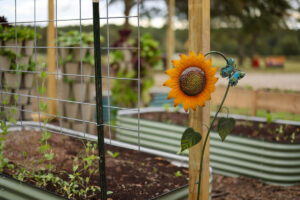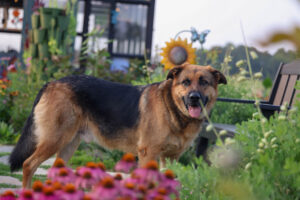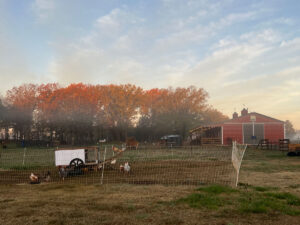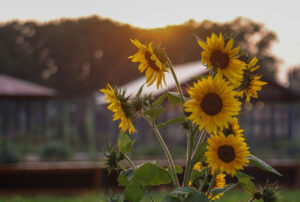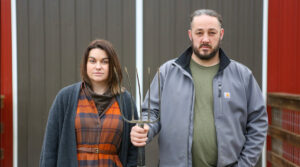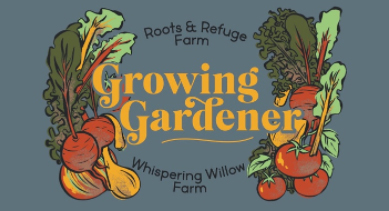Can you grow items you purchase from the grocery store in your garden? Many people will tell you no, but this is an unfortunate misconception. Let me help clear things up and give you my opinions on growing items from the grocery store.
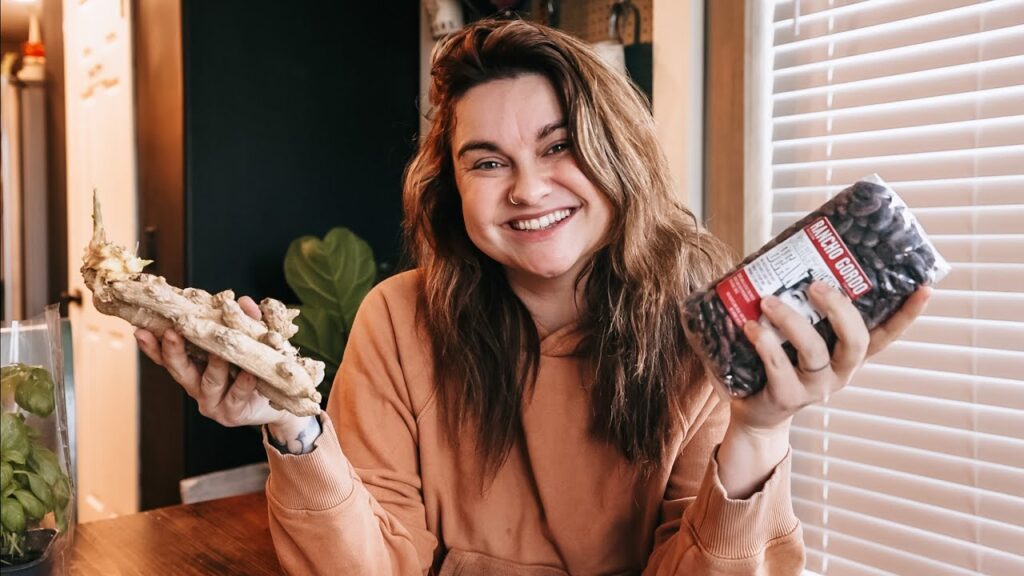
I've tried a lot of experiments when it comes to gardening, everything from growing greens year-round, using a $7 kiddie pool for a raised garden bed, learning how to grow in soil bag containers, and even using cattle panels for vertical gardening.
Believe it or not, these experiments will teach you so much when it comes to growing a garden, which is why I want to discuss my take on growing produce (and other seeds) that come from the grocery store.
Can You Regrow Produce From the Grocery Store?
I get asked frequently whether a potato that's sprouting or growing eyes can just be planted in the garden to grow more food.
Many people will say no, those can't be planted because they've been sprayed with chemicals that will retard the growth and keep it from growing properly. I'm not 100% certain if this is true or untrue, but I have heard from people who have tried this themselves that they will in fact grow more potatoes.
Does that mean all store-bought potatoes will grow if planted in the ground? Probably not, but that doesn't make it untrue for all potatoes.
If you want to give growing store-bought a try, just opt for organic produce to avoid all the chemicals used in big agriculture.
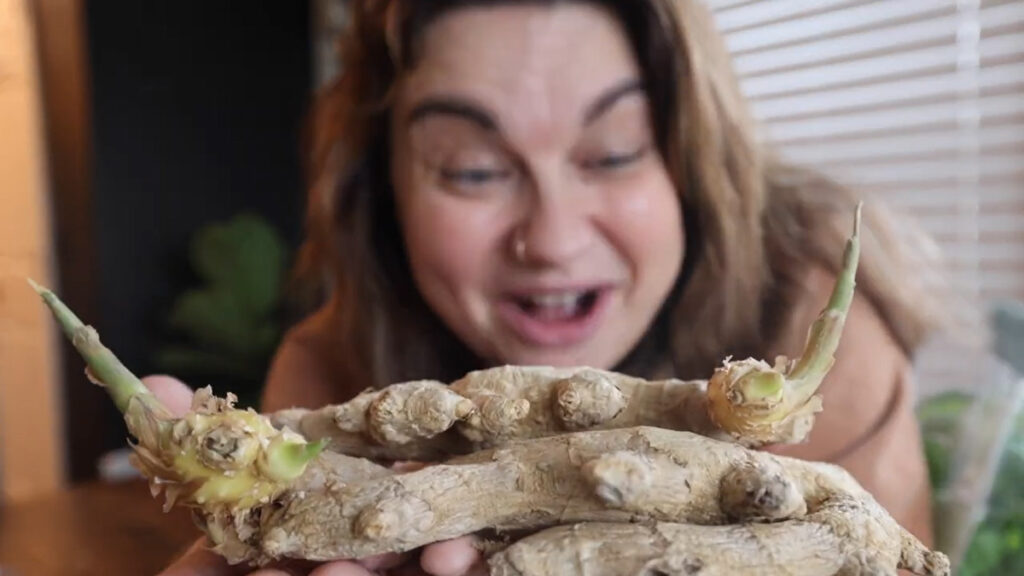
Cuttings & Sproutings
Ginger
The ginger pictured above is just grocery store ginger that started to sprout. I should have planted it right when it began to sprout (but I wanted to show it to you in a video before doing so!).
One sprout off of a knob of ginger represents a lot of future ginger.
All you have to do is keep your ginger in a warm place in your kitchen until a sprout starts to grow.
At that point you can cut them into pieces with one sprouting knob on each piece. The flesh will heal over and you can plant them in soil (keeping them warm) and transplant outside once the threat of frost has passed.
It will continue to grow and you can harvest a lot of ginger off of a piece that only cost you a few dollars.
If you buy ginger from a seed company, you may be able to get more information about the variety, and it may come with growing instructions, but it's not going to be different than the ginger from the grocery store.
If you've never grown fresh ginger it's a game-changer and is very simple to grow.
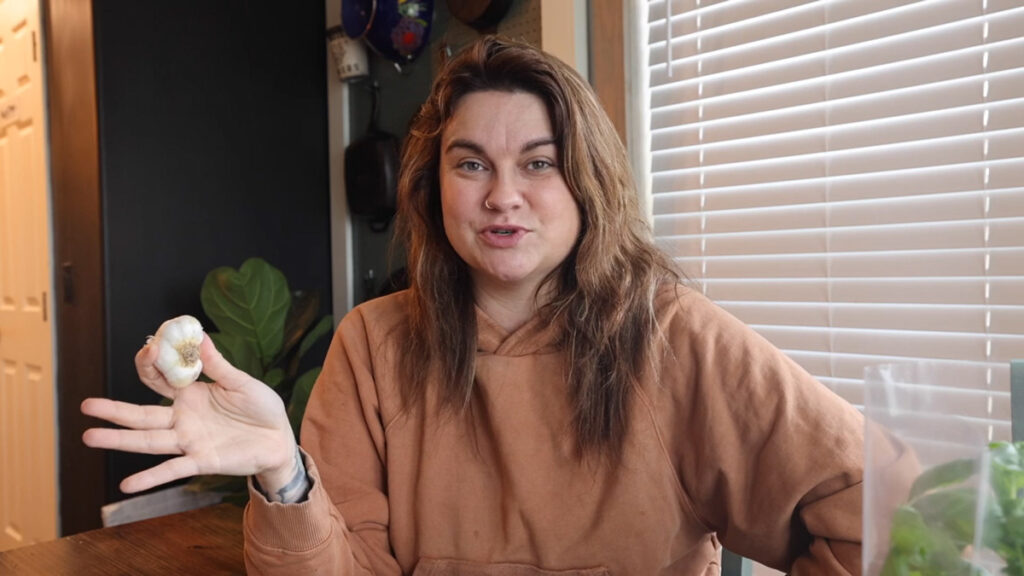
Garlic
Every year, whenever the topic of garlic and potatoes come up, everyone asks why not grow garlic from grocery store garlic?
I've been told that garlic has some kind of inhibitor that will keep it from growing. But this has always come from people who have never tried growing it themselves.
I have successfully grown garlic purchased from the grocery store. The only downfall is I didn't know the variety.
One side note on that is that a lot of garlic is unethically grown outside of the United States, so I make sure whenever I buy it that it's grown in the U.S.
There are two varieties to look for when buying garlic, that's softneck or hardneck.
- Softneck garlic is the kind you can braid into beautiful ropes that will store for a long period of time.
- Hardneck garlic will give you garlic scapes in the spring which are edible as well as the head of garlic to harvest, but the storage of the hardneck varieties isn't as long.
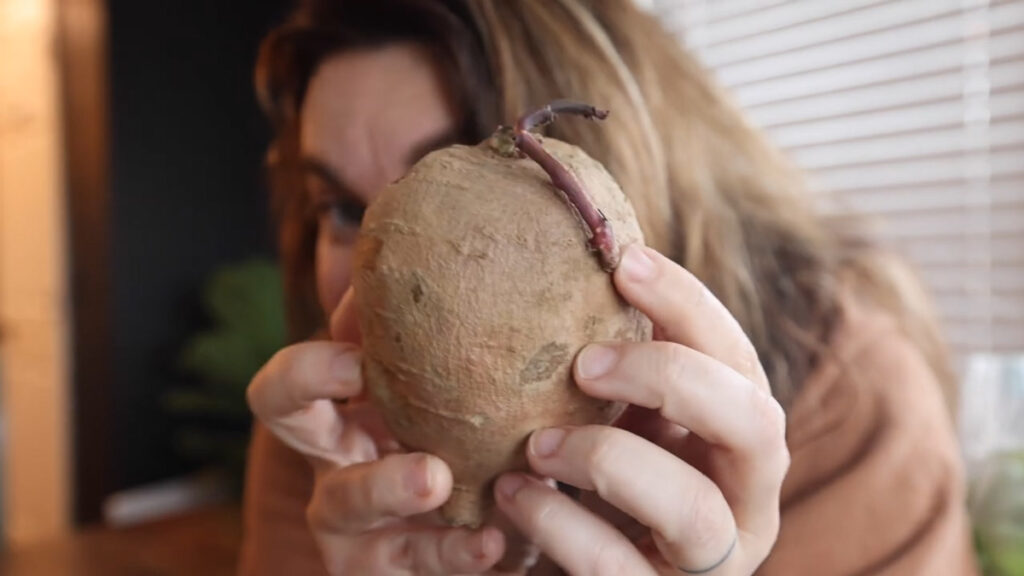
Sweet Potatoes
I didn't do anything special to my sweet potato to get it to sprout, it just did it all on its own.
But if you want to force your store-bought sweet potato to sprout you can shove toothpicks into the sides of the sweet potato and suspend the bottom of the potato in a jar of water so the bottom is soaking in the water (this is a really fun experiment to do with your kids!).
The potato will actually start to sprout and grow a plant and all you have to do in order to plant it is to break off a sprout right at the potato and that's a sweet potato slip.
If you were to go buy sweet potato slips from a farmer or a store in the spring you might pay $15-20 for 20 sweet potato slips.
Whereas you could stick some sweet potatoes in water and grow them yourself.
I did this one year from WholeFoods one year. I bought a really delicious purple sweet potato that I wanted to grow myself. It started sprouting so I planted them and grew them in my garden.
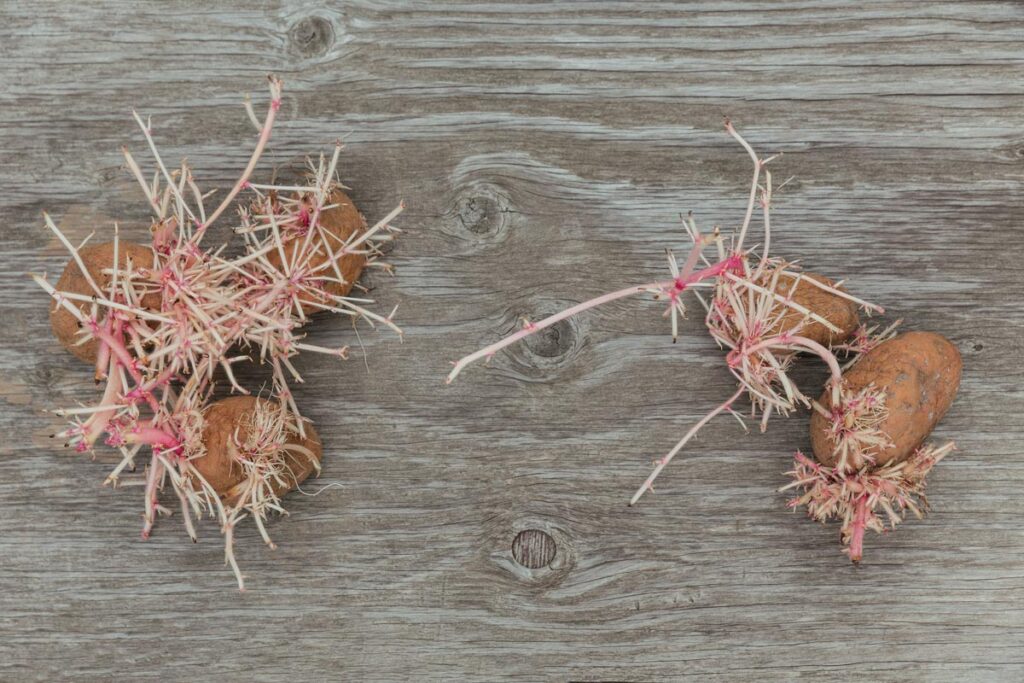
Potatoes
Regular potatoes grow eyes and start to sprout all the time. All you have to do to grow them in your garden is to cut up your potato and make sure each piece has an eye on it (or plant the whole potato whole).
If you plant the whole potato it will grow multiple plants in a small space so your potatoes won't grow as big. This is fine with me because I happen to love the smaller new potatoes.
But if you're wanting to grow larger potatoes, cut up the potato with an eye on each piece, lay them out in a single layer on some newspaper to dry and scab over the flesh, then plant one piece every 10 inches in your garden. Using this method you'll grow larger potatoes, more like what you find at the store.
There is often a concern about potatoes being like a sponge and absorbing toxins out of the soil, therefore I always choose organic potatoes from the grocery store if I'm going to be planting them.
However, I have also known many people who have successfully planted and grown conventionally raised potatoes as well.
Growing Grocery Store Potatoes
When you buy a seed potato it has usually just been stored in a way that's allowed the potato to sprout more. So if you want to plant potatoes in April or May, you might want to go buy some potatoes from the grocery store now and get them storing and sprouting for the next few months.
Lay them out in a single layer in a place that's dry and cool (a garage is great) and allow them to sprout. I think the dairy crates that have holes and plenty of ventilation are a great option. Just be sure to store them in a way that rodents can't get to them.
Can You Regrow Seeds From the Grocery Store Produce?
Another thing you hear a lot is that you can't save seeds from grocery store produce that are hybrids because they won't produce again. This is another generalization that just isn't true.
When it comes down to a preparedness situation, you're going to plant anything you've got. So if you have is a tomato sitting on your counter that you bought at the grocery store, it's going to produce something.
Hybrid Seeds
The misconception is whenever anyone says hybrids aren't sustainable, what that means is if you buy a nice medium-sized red tomato from the grocery store (it's probably going to taste like disappointment), but if that's what you've got and you were to plant those seeds, they will grow a tomato plant.
But that hybrid might have been developed for a certain quality for that tomato and the seeds won't be stabilized.
So you might get tomatoes that are shaped differently, have a different colors, different sizes, they might not taste very well, they may not be great producers so you might not get very many tomatoes, etc.
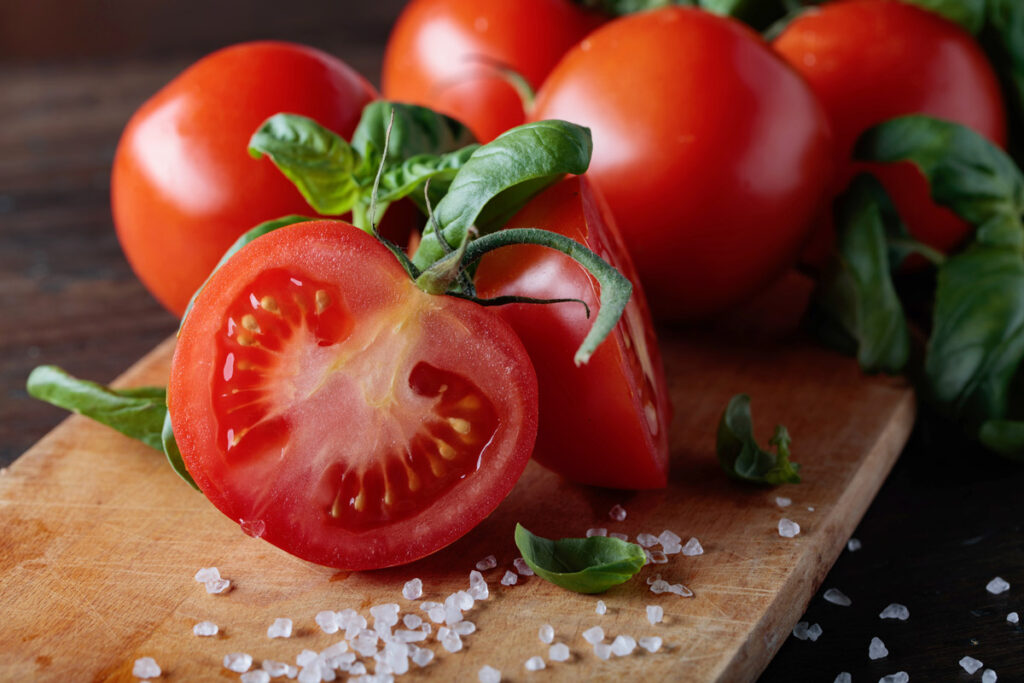
Open-Pollinated Seeds
When possible, if you're going to devote your garden space to growing a tomato plant, you'll want to focus on planting open-pollinated seeds of an heirloom variety or a newer hybrid variety.
If the seeds are stabilized, they will be listed as open-pollinated which means you can save the seeds from it and you will get a plant that produces fruit like that parent fruit.
But that doesn't mean that you can't grow food from hybrid seeds.
My Aunt Martha, who has since passed away (my cousin Amy's mom), was such a chronic seed saver that she would pull out pepper seeds from her salad at a restaurant and fold it up into a napkin to take home and grow it.
She would pull seeds out of anything: grocery store produce, food at a restaurant, dead-heading things on the way into buildings (like dead-headed flowers, etc.) and save those seeds.
People grow food from grocery store seeds all the time. It will grow food as long as the seed is mature.
For example: a watermelon from the grocery store that has fully-matured seeds in it, if you take them home and plant them, they will grow.
But a cucumber that's been picked young to be nice and tender, if you open that up the seeds are soft and tender and not fully developed, so those seeds are not mature and will not grow a new plant.
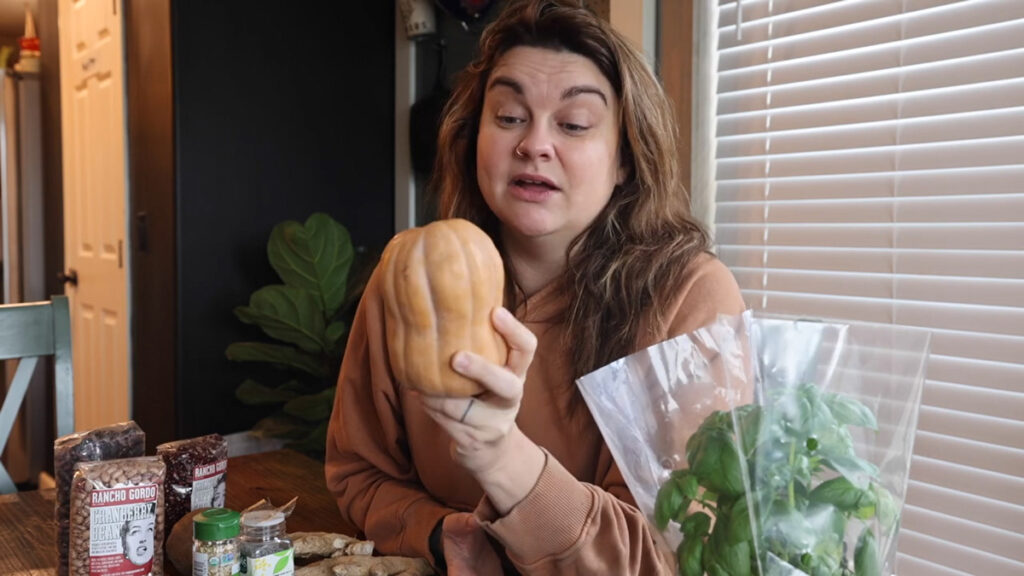
Concerns About Squash Being Poisonous
There is a thing about squash that continually gets repeated, and that's when you get cross-pollination with squash is that they become poisonous.
Now I've bought squash from the grocery store without knowing what field it was grown in or knowing if it was cross-pollinated with other squash (which can happen very easily).
But it's important to know that squash that are poisonous are also very bitter.
One year I bought a honey-nut squash from Trader Joe's and what grew was anything but honey-nut. It looked more like a butternut squash, but the crop was edible and delicious, but it wasn't the sustainable crop that I had wanted.
So if you want a specific variety and are limited in garden space, then go ahead and buy the seeds so you know you're growing exactly what you want.
Moral of the story is I'm not going to kill my family by feeding them poisonous squash, your taste buds will tell you if the squash is bitter and “off tasting” and you won't want to eat it anyway.

My Conclusion on Growing Grocery Store Seeds
Growing seeds from the grocery store may not be the best option for you. If you only have so much space to grow tomatoes, you might not want to take up that space by hoping a seed from the grocery store tomato will grow food for your family.
But if you're just wanting to experiment, then go for it!
If you are limited to what you can grow, or you don't have the money to go out and buy seeds, then this is certainly an option for getting a garden growing. But do choose the open-pollinated and heirloom organic varieties.
Bottom line, don't believe the myth that just because you got the seeds from the fruit itself (and not a seed packet) that it won't grow.
In my gardening lifetime I've had melons grow accidentally where I've spit the seeds while eating, I've had pumpkins grow in the compost from the seeds I scooped out from pie pumpkins I bought at the store for pumpkin pie.
Don't dismiss the seeds completely, but do adjust your expectation on what will grow!
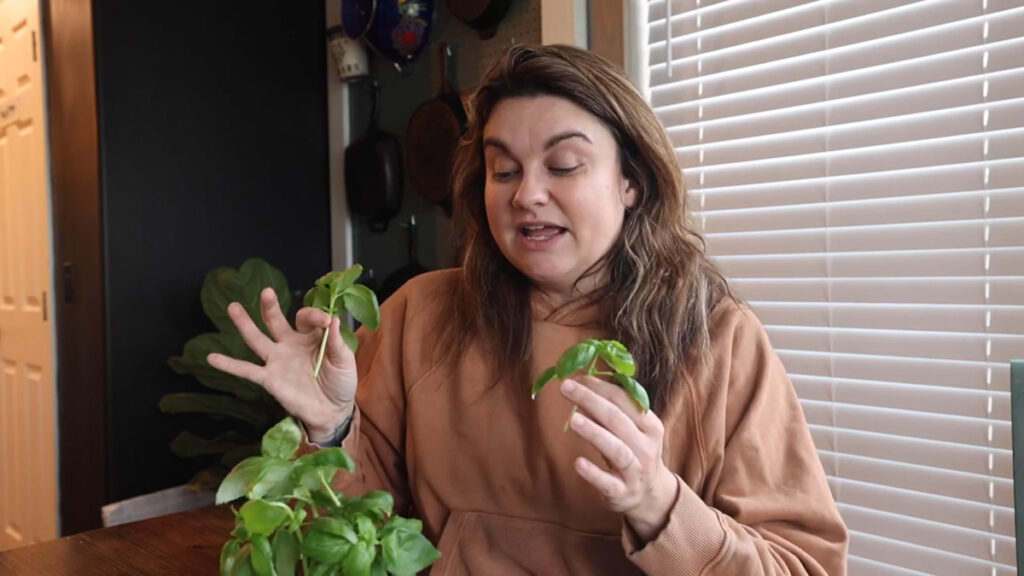
Propagating Plants from the Grocery Store
Basil & Other Herbs
Since I didn't have any basil growing in my garden I bought a plant at the grocery store since we were making a whole lot of pizzas for Miah's birthday.
There are many herbs that are simple to propagate (thyme, rosemary, oregano, etc.), but basil is probably the one that propagates the fastest.
All you need to do is break off a sprig of basil at the base of the stem and place it in a cup of water.
Within about a week to a week and a half you will see roots growing. You can then stick it in some soil and you will have another plant.
Now, if you buy grocery store plants don't go and immediately plant them into the garden. They will shrivel up and die so quickly because they haven't been hardened off to natural light or cool temperatures. The grocery store plants are grown indoors with artificial lighting and will need to acclimate to your region.
To do this just take your plant outside and set it out for about an hour in the morning and evening each day, increasing the time it's out by an hour or two until it can stay out all day long and all danger of frost has passed (basil is very frost tender).
The large basil plant I purchased from the grocery store could probably be split up into 10 or 12 plants. I could start them in jars of water, then move them into starter cups with some soil and have many basil plants ready for the garden in a few months.
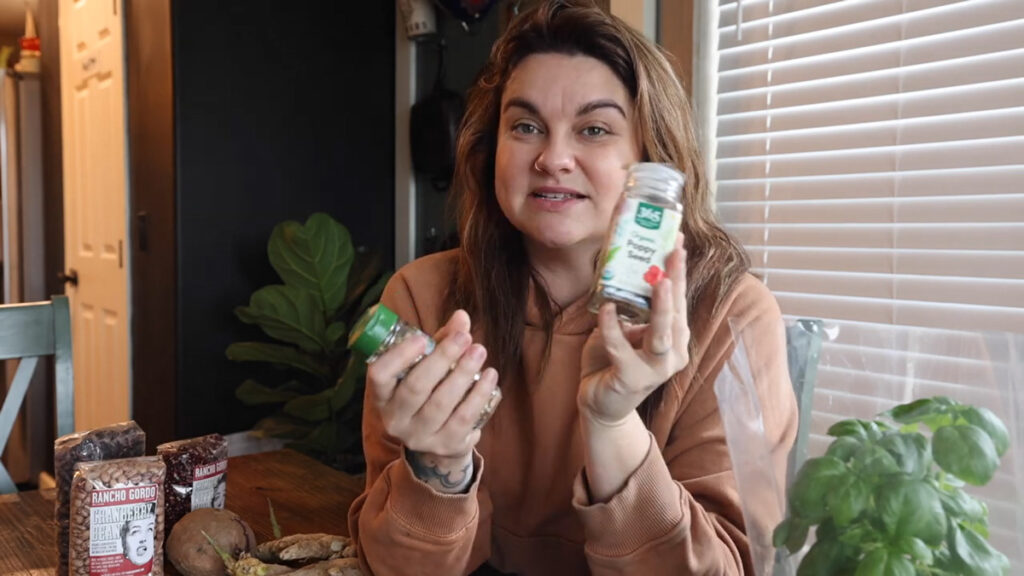
Growing Plants from the Spice Aisle
I've purchased bottles of fennel seeds and poppy seeds from the spice isle at the grocery store. These are both the seed form of the plants that will grow both fennel and poppy flowers.
Now if I were to buy a seed packet I would probably only get about 1/4th the amount of seeds, but I would also get planting and growing instructions, which do not come on the grocery store bottle.
But the fact of the matter is these seeds are seeds that can be planted.
Most of the poppy seeds that you purchase for culinary use are from the Breadseed Poppy variety. You can plant these seeds, let the flowers grow, harvest the flower heads and let their seeds dry out for more culinary use.
Other Spices You Can Grow
Other spices you can grow from the grocery store are:
- Dill Seeds
- Coriander – which is the seed version of cilantro
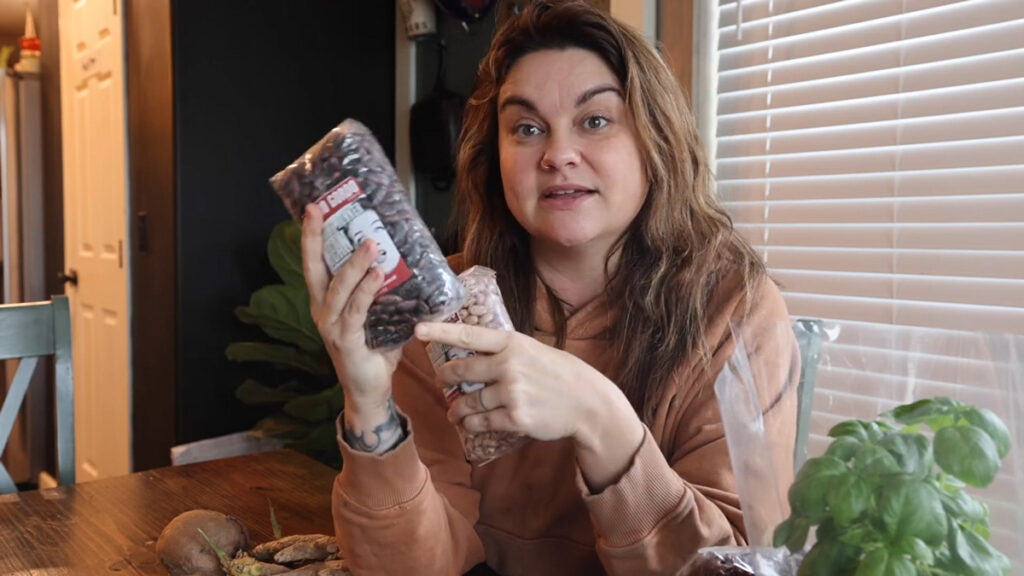
Other Grocery Store “Seeds”
Beans
You may have been surprised when you first started gardening and opened up your packet of beans to realize they look just like dry beans.
Well, that's because that's exactly what they are!
I have actually purchased heirloom beans such as Scarlett Runner Beans or Cranberry Beans that could be planted and grown successfully.
In most cases, beans don't cross-pollinate, so you can plant and grow them very successfully.
If you're going to buy regular conventionally grown dry beans you can use them to grow cover crop. We did this when we had tilled up a large area of our yard that we wanted to keep from eroding, we planted regular grocery store dry beans and grew a fantastic cover crop.
We didn't let them grow to maturity because once they grew in the grass started growing in as well and we no longer needed the beans so we just mowed them down.
But if you're wanting to grow from grocery store beans, I would always err on the side of buying organic beans.
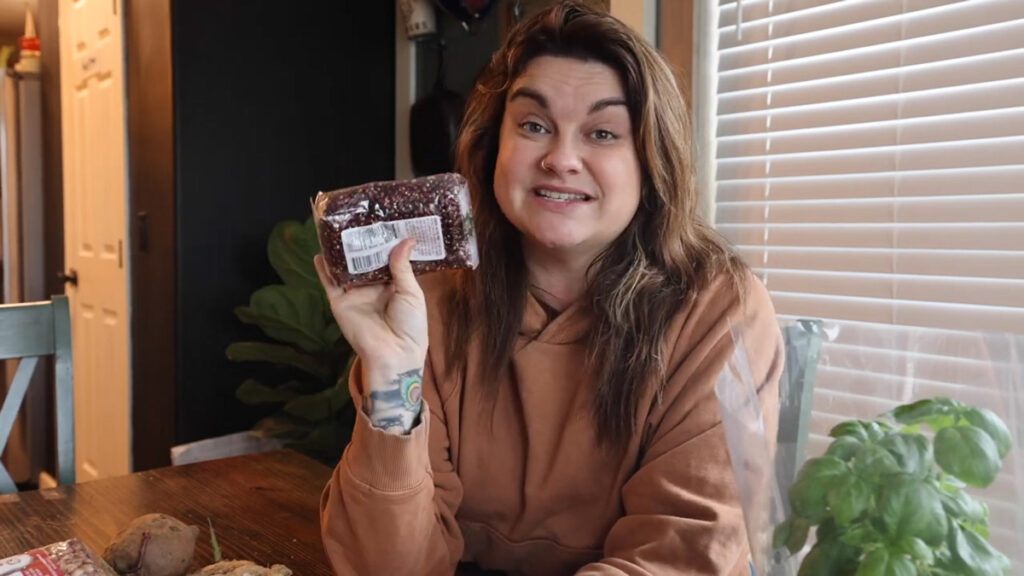
Popcorn
In the United States (where I live) most of the corn you will buy at the grocery store (unless it's labelled non-GMO or organic) it will be a genetically modified crop.
This is with one exception and that is popcorn. That's the one crop that is not allowed to be GMO. It's actually not legal to grow GMO seeds that they're going to sell to the general public.
And since popping corn is going to be sold in grocery stores, these will not be GMO seeds, even if they're not marked that way.
Something to consider with all of this is that corn is an intensive crop that takes a lot of space and quality soil to produce a good crop, so planting a bag of popcorn that you don't know the variety or germination rate is risky.



